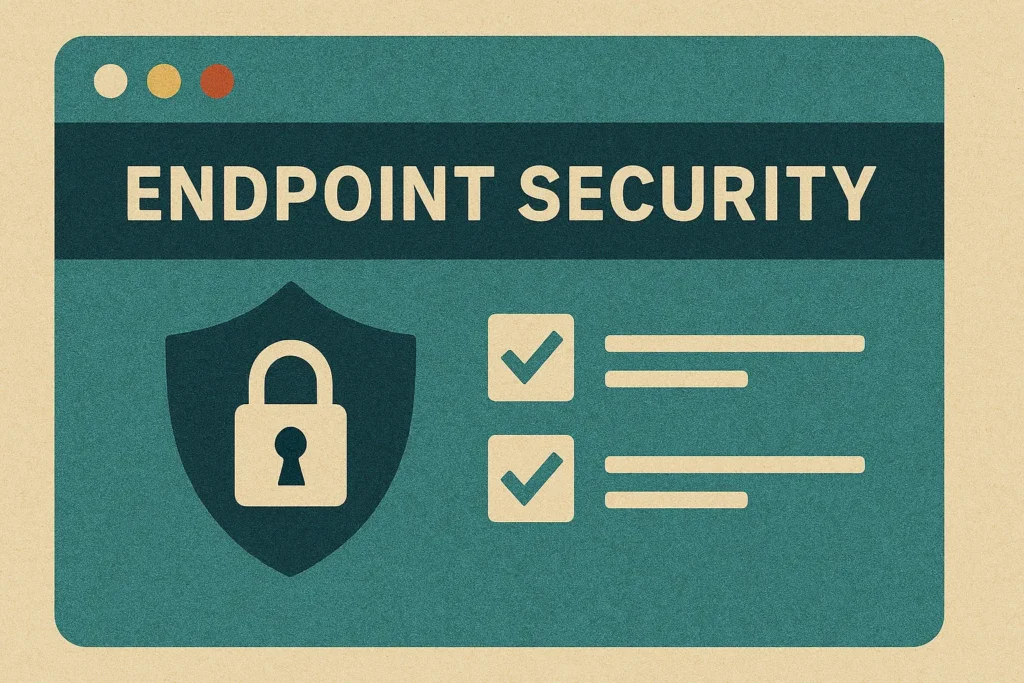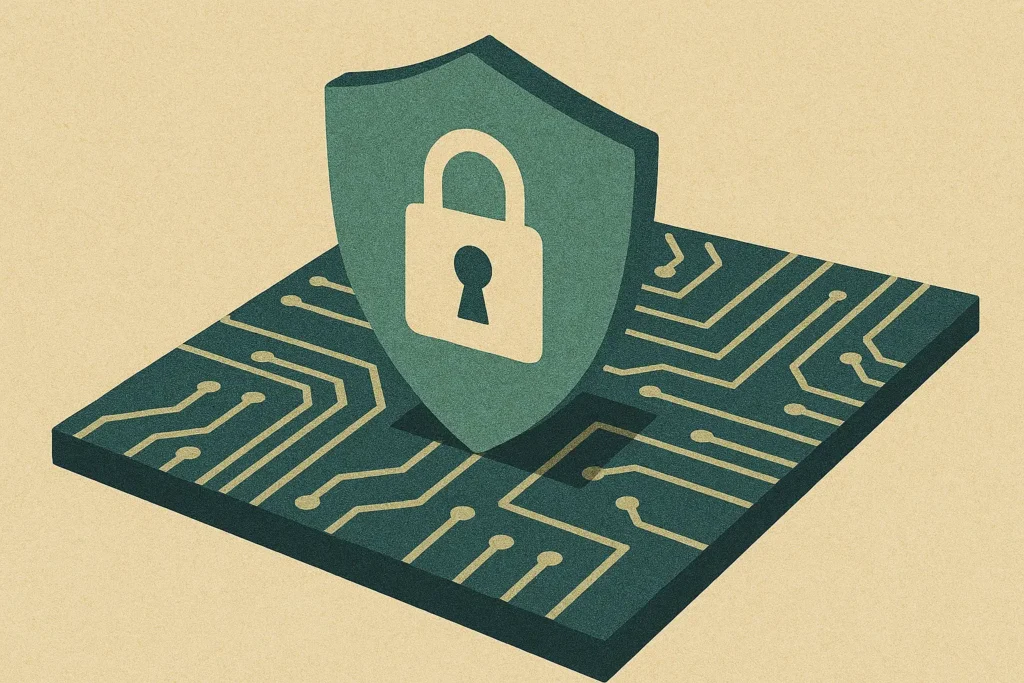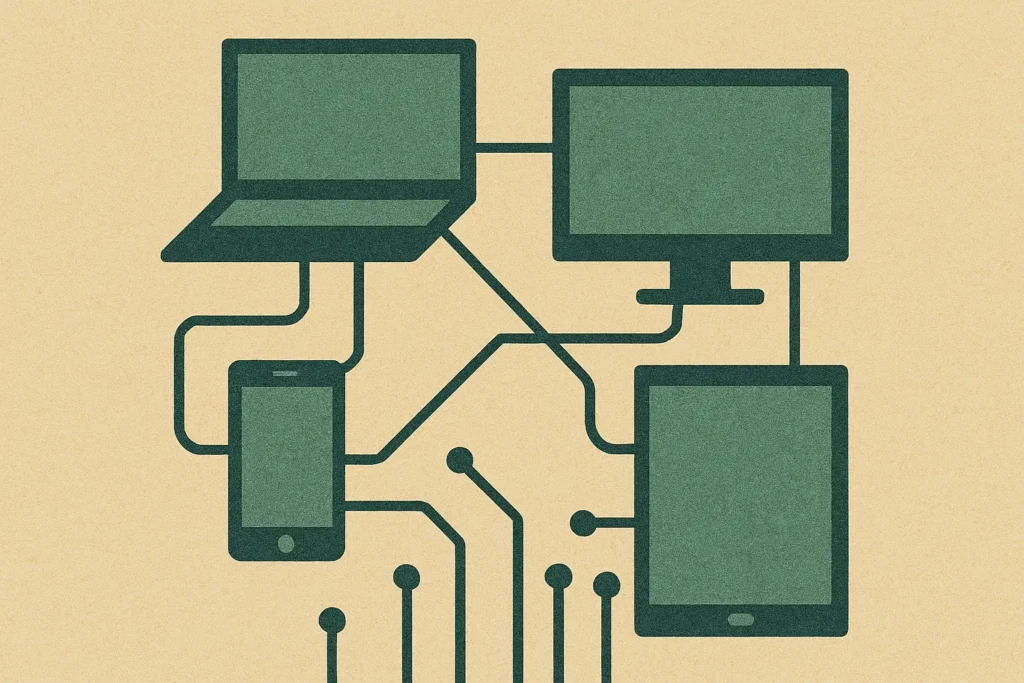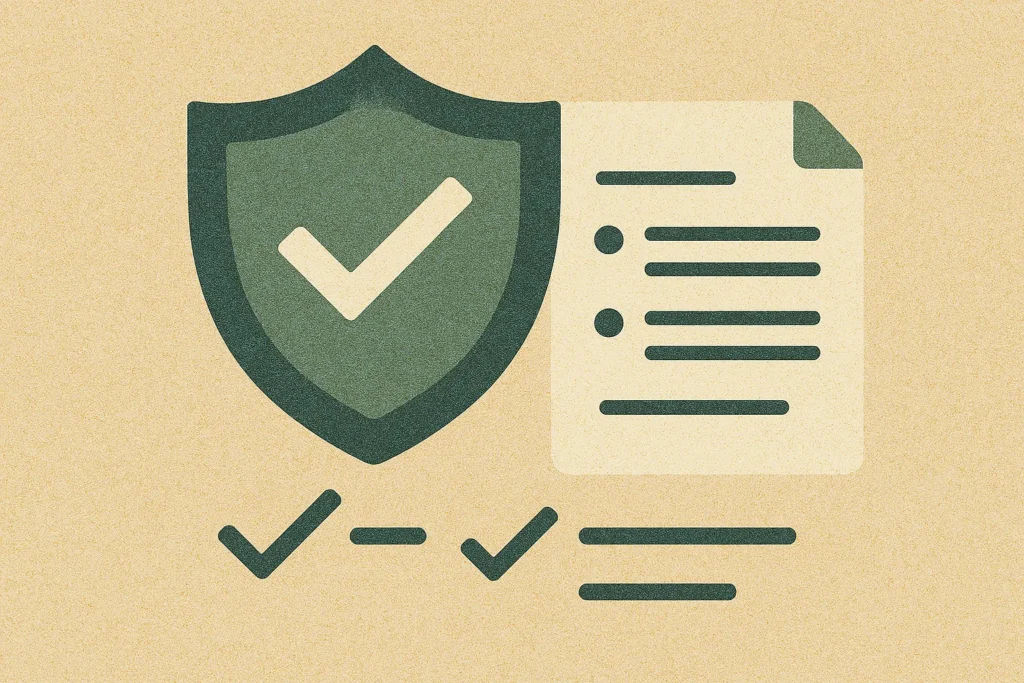What is Endpoint Security Management & Why is it Important?
Endpoint security management is a cybersecurity approach that protects devices like laptops, smartphones, and servers from digital threats.
In this article we cover what is endpoint security management, why it’s vital, and the essential components you need to know.
What is endpoint security management
Endpoint security management is a cybersecurity approach that defends devices that connect to systems and infrastructure from digital threats.
These devices, known as endpoints, include anything from laptops and smartphones to servers and IoT gadgets. The role of endpoint security management is crucial in protecting sensitive information, ensuring devices are secure, approved for resource access, and user-friendly.

A comprehensive policy framework, considering personal devices in corporate environments and evaluating access rights to endpoints, is key to effective endpoint management.
Continuous validation of both users and devices, in line with the zero trust security model, maintains a robust security posture. This approach ensures that only authorized users and devices can access critical resources, minimizing the risk of breaches.
Why is endpoint security management important?
Endpoint security management is a cornerstone of modern cybersecurity strategies.
As cyber threats grow more sophisticated and remote work expands the digital attack surface, protecting every device connected to a network—laptops, smartphones, tablets, and more—has never been more vital.
Endpoints serve as the first line of defense against attackers and are often the primary targets in security breaches. Without a solid endpoint security framework, organizations expose themselves to increased risks, operational disruption, and compliance failures.
Here are the key aspects of endpoint security management that highlight its importance:
- Mitigates Risk of Data Breaches
With up to 70% of successful data breaches originating from endpoints, strong endpoint security drastically reduces the chances of unauthorized access and data loss. By deploying tools such as antivirus, firewalls, and zero-day threat protection, organizations can keep sensitive information safe from financial or reputational damageSource text. - Enhances Visibility Across Devices
Endpoint security provides comprehensive visibility into all devices connected to the network, enabling real-time monitoring, threat detection, and swift response to vulnerabilities. This ensures potential threats are identified and neutralized before causing harmSource text. - Improves Compliance with Regulations
Many industries are bound by strict regulations for data protection. Endpoint security management helps organizations stay compliant by ensuring devices meet security standards, avoiding fines and legal issues while earning client and stakeholder trustSource text. - Boosts Operational Efficiency
By integrating automated tools for software updates, threat detection, and device monitoring, endpoint security lightens the workload for IT teams. This not only frees up resources for strategic tasks but also improves incident response times and overall productivitySource text. - Enables Proactive Threat Detection
Modern endpoint solutions use behavioral analysis and real-time monitoring to proactively identify suspicious activities. This early detection helps maintain business continuity and prevents disruptions caused by malicious attacksSource text. - Supports Business Continuity and Productivity
Unprotected or compromised endpoints can cause system downtime, lost productivity, and expensive recovery processes. Effective endpoint management ensures uptime, maintains service delivery, and minimizes operational costsSource text. - Strengthens Holistic Cybersecurity Strategy
Endpoint security is a foundational element of a broader cybersecurity ecosystem. When combined with cloud security, network protection, vulnerability management, and employee training, it helps build a resilient, all-encompassing defense against evolving cyber threatsSource text.
Key components of endpoint security management
Endpoint security management is built on several key components: device configuration, patch management, and privileged access management. A robust management strategy for endpoints ensures both security and productivity within an organization.
IT must maintain control over the entire technology stack to achieve effective endpoint management.
Device configuration management
Enforcing security policies through proper device configuration maintains control over endpoint devices.
Using security baselines, such as those from Intune, helps organizations implement best practice configurations and ensure device compliance with corporate security standards.
This is especially important for mobile devices and other remote devices that frequently connect to corporate networks.

Centralized dashboards and mobile device management (MDM) solutions are essential for device configuration management. These tools enable network administrators to manage multiple devices, ensuring they are configured correctly and securely.
Whether dealing with approved devices or employee-owned devices, maintaining consistent configurations across all endpoints is vital for protecting corporate data and networks.
Patch management
Timely software updates through patch management protect devices from vulnerabilities, a critical aspect of endpoint security.
Regular software updates fix vulnerabilities and enhance security. Routine maintenance improves an organization’s security posture, making it harder for cyber threats to exploit outdated software.
Centralized consoles allow IT teams to manage patch deployments, ensuring timely security patches for all endpoint devices.
This proactive approach helps maintain control over the technology stack, reducing the risk of security breaches due to unpatched vulnerabilities.
Privileged access management
Controlling access to sensitive data reduces the risk of unauthorized actions and potential breaches. Role-based access control (RBAC) within the Intune security node ensures only authorized personnel can access critical corporate resources.
Setting up security protocols and policies enforces strict access controls in privileged access management. This includes implementing measures to control network access and remote access, ensuring that only approved devices and users can gain access to sensitive data.
Enforcing security policies helps organizations protect their assets and mitigate the risk of security breaches.
Types of endpoint devices
A broad range of technology falls under endpoint devices, each requiring proper management and protection. PCs, laptops, and servers are primary user devices that must be safeguarded against malware and cyber threats. However, the scope of endpoint devices extends far beyond these common tools.
Virtual machines and embedded devices also fall under the category of endpoints. Additionally, the rise of the Internet of Things (IoT) has introduced various smart devices like cameras, lighting systems, and thermostats, all of which are considered endpoints.

Managing these diverse devices is crucial to ensuring robust security for corporate data and networks.
Point of sale systems and printers, often overlooked, are equally important types of endpoint devices. Unique configurations and vulnerabilities of each device type necessitate tailored endpoint security measures to protect the entire ecosystem.
Unified endpoint management (UEM)
Unified Endpoint Management (UEM) allows organizations to secure and control all endpoints through a centralized dashboard.
UEM allows security professionals to manage, secure, and deploy corporate resources and applications on any endpoint from a single console. Integrating various management systems into a single framework provides better control and simplifies endpoint management system.
A centralized platform allows IT administrators to ensure consistent security policies across different device types and operating systems. UEM streamlines the entire lifecycle of devices, from onboarding to retirement, including secure data wiping when devices are no longer in use.
Centralized management is crucial for maintaining a robust security posture across all endpoints.
Endpoint security benefits from UEM by enabling centralized management, allowing IT teams to enforce security policies and simplify reporting across all devices.
This approach ensures that all endpoints meet the same security standards, reducing the risk of security breaches.
Endpoint security policies
Clear and effective security policies form the backbone of endpoint security management. These policies define user responsibilities and acceptable device use, ensuring consistent security measures across all endpoints.
Continuous monitoring and assessment of endpoint security measures maintain a robust security posture.
Comprehensive reporting tools track device compliance and performance. Compliance policies set device access rules based on operating system versions and password requirements, ensuring adherence to corporate security standards.

Training employees on security policies minimizes the risk of human error leading to security breaches.
Incident response procedures, specifying actions in the event of a breach, should be an integral part of endpoint security policies. UEM ensures consistent application of security policies across varied devices, meeting the same security standards with minimal effort.
This empowers organizations to enforce security measures protecting devices accessing corporate data remotely, using tools like encryption and VPN access.
Endpoint management software solutions
Endpoint management software solutions, providing automation, enhanced security, and centralized control, are indispensable for modern IT teams.
These endpoint management solutions continuously monitor devices, maintaining security and performance. Automating tasks such as updates and device configurations, an effective endpoint management solution significantly reduces the IT teams’ workload.
Additionally, endpoint management systems play a crucial role in streamlining these processes.
Centralized control allows IT teams to manage all devices from a single platform, ensuring consistent security practices and improving efficiency.
Automated patch management ensures all devices receive the latest updates, maintaining a strong security posture. These tools integrate with antivirus software, enhancing overall security measures.
Remote troubleshooting capabilities allow IT professionals to resolve issues without physical access to devices.
Benefits of effective endpoint security management
Effective endpoint security management significantly minimizes risks throughout an organization.
Improved threat detection and endpoint detection enhance monitoring and response capabilities. Enhanced protection against malware identifies and neutralizes known threats before causing damage.
Real-time alerts facilitate quick responses to potential threats, bolstering overall security posture.

Preventing data breaches protects sensitive information and minimizes financial losses from cyberattacks. The use of encryption and automated backups further reinforces data protection.
Endpoint security management, being cost-effective, reduces incident response times and related expenses through automation.
Challenges in endpoint security management
The increasing variety of devices that enterprises must secure, each with unique configurations and vulnerabilities, presents several challenges in managing endpoint security.
Remote work expands the potential attack surface by placing devices outside traditional corporate protections.
User behavior adds to the risks, with employees sometimes falling for phishing attempts or installing unauthorized software. Multiple security tools can lead to fragmented security postures and increased administrative burdens.
The constant release of updates can overwhelm IT resources, making timely patch management a significant challenge. Navigating these complexities is essential to protect against evolving cyber threats.
Getting started with endpoint security management
Conducting regular security audits to identify weaknesses and ensure compliance with industry standards is a starting point for endpoint security management.
A strong endpoint management strategy protects proprietary and client data, systems, and applications.
Endpoint management and protection services simplify management, mitigate threats, protect data, improve compliance, lower overhead costs, and adhere to endpoint management policies.
These steps enhance user experience by minimizing disruptions from cyber threats and supporting remote work environments.
Frequently asked questions
What is endpoint security management?
Endpoint security management is a crucial cybersecurity strategy that protects devices connecting to systems from digital threats while ensuring they are secure and authorized for resource access.
This approach not only safeguards sensitive information but also enhances overall user experience.
Why is endpoint security management important?
Endpoint security management is essential as it safeguards against data breaches and cyber threats, especially in environments with various endpoint devices.
By ensuring robust protection, organizations can maintain data integrity and security.
What are the key components of endpoint security management?
The key components of endpoint security management are device configuration management, patch management, and privileged access management, which are vital for ensuring a strong security posture.
Implementing these components effectively helps protect against potential threats to your endpoints.
How does unified endpoint management (UEM) benefit organizations?
UEM enhances organizational efficiency by centralizing control of all endpoints, ensuring consistent security policies, and simplifying device management. This ultimately leads to improved security and streamlined operations.
What challenges do organizations face in endpoint security management?
Organizations face significant challenges in endpoint security management, including the need to manage diverse devices, address risks associated with remote work, and ensure timely patch management despite constant software updates. These factors complicate the protection of sensitive data and networks.